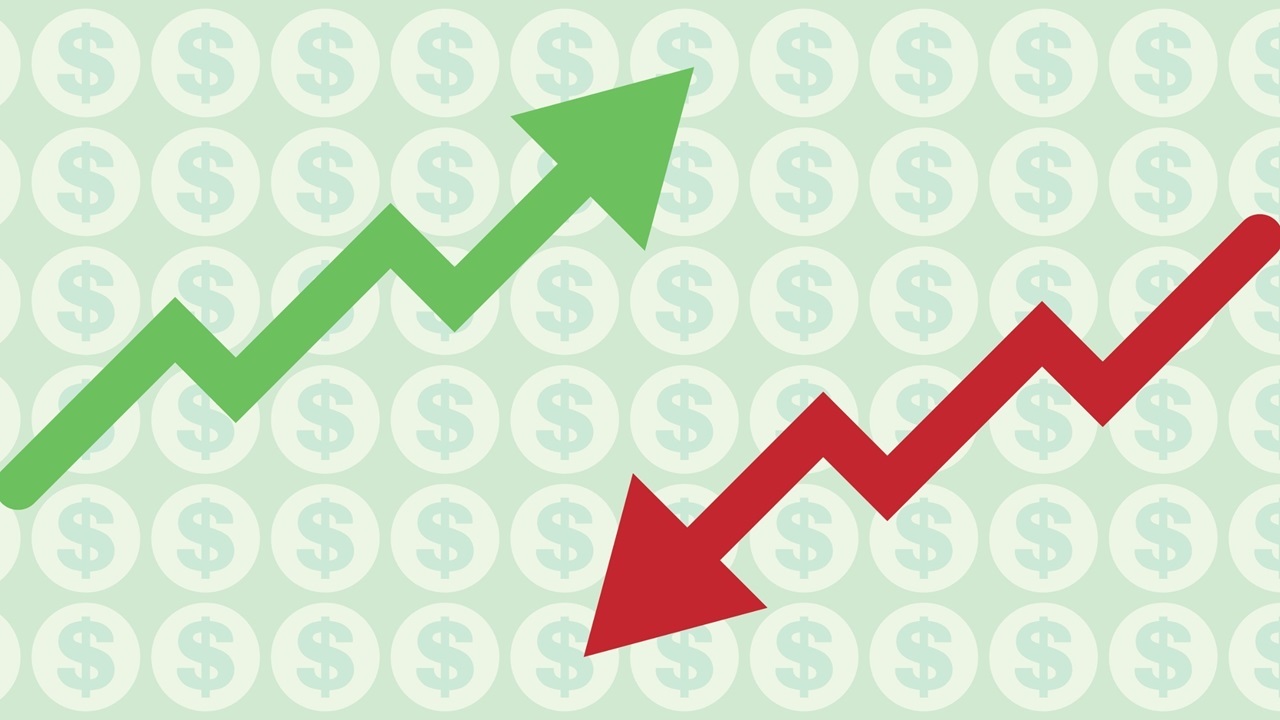
In many ways the 2022 and 2023 years have felt like the middle episode of an economic trilogy.
The beginning of the story could be seen as 2020, with the start of the pandemic and then including 2021 and the fateful return of inflation.
The past two years have been the midpoint of our story, in which battle with inflation has been joined (by the Reserve Bank) and we’ve increasingly been cast into a kind of waiting mode to see if what the RBNZ’s trying will ‘work’.
As the lights prepare to go out on 2023 there’s clear signs of things happening. Inflation IS coming back down, although goodness knows, it has taken its time. The economy is turning down. Unemployment is turning up, though it has also taken its time. The things that NEED to happen to slow the economy enough to take the heat out of inflation appear to be happening.
So, 2024 has the look of being the beginning of the final part of our trilogy. It will be the Year of Finding Out.
We’ll get to find out if all the huffing and puffing with high interest rates really can get a proper grip on inflation. We’ll find out if a lot of us lose our jobs. We’ll find out if the economy slows enough that businesses start to struggle – and clearly some are already.
With that ‘big picture’ idea in mind then I am going to outline some thoughts on the things I’m looking out for in the economy over the next year. As ever I’m not making predictions as such, just seeking to identify what I see as the likely key issues and the way in which they need to develop – and also the way in which we DON’T want them to develop.
As I’ve said for a while, I still think the labour market is the most pivotal, issue. And maybe that does sound a bit odd when all the focus is on inflation. But we ain’t going to get inflation fixed unless the labour market plays ball.
Remember, the labour market got hot before the pandemic even started. But it then became searing during the pandemic as employers found they couldn’t tap into the usual safety valve of migrant workers. Unemployment at one stage got as low as 3.2%. I didn’t think we would ever see it get that low. We might not see it that low again.
With migrants now flooding in once more (and don’t worry I’ll have plenty more to say on this subject) that unemployment rate is going up, rising from 3.6% as of June to 3.9% in September. In its latest set of forecasts in the November Monetary Policy Statement (MPS,) the RBNZ forecast that unemployment will hit 5% in the September quarter of next year and peak at 5.2% in June 2025.

With the RBNZ having engineered a situation in which the unemployment rate is now going up, will we see the supposed Goldilocks, soft-landing, scenario where the rate does indeed settle somewhere just above 5%? Or is there yet the possibility this gets away on us and the rate goes somewhat higher? That could be bad. Kiwibank economists said recently, for example, that they reckon if the rate got above 7% that’s “when we start to see a more exponential rise in mortgage defaults…”
For those who remember the early 1990s, the unemployment rate reached over 11% and it WAS grim.
So, assuming unemployment does go up – but not by too much mind – then what about inflation? As mentioned further up the article, this has been taking time.
We need to consider inflation in two parts – there’s the ‘tradable’ overseas sourced inflation, such as through oil prices, and there’s ‘non-tradable’ domestically sourced inflation.
The RBNZ can’t do much about the first one, but very much takes aim at the second through usage of the Official Cash Rate. Since October 2021 the RBNZ has had to crank the OCR up all the way from the pandemic emergency setting of 0.25% to 5.5%.
Is it working? Well, the jury is still a bit out on that. Tentatively, yes, it is working, but this coming year will provide more hard evidence of whether it definitely is working and whether it will continue to work. We need it to work.
The ‘headline’ annual inflation rate as measured by the Consumers Price Index (CPI) peaked at 7.3% in June 2022 and has gradually made its way down to 5.6% as of the September quarter 2023.
However…
If we break down the figures into tradable and non-tradable inflation, things do not look quite so peachy.
In June 2022 when the ‘headline’ inflation figure was at that 7.3% peak, the tradable inflation was running at an eye-watering 8.7%. As of September 2023 this was down to 4.7% as the global impact of the massive supply chain disruptions has worn off.
But non-tradable inflation? As the economists like to say, this has been ‘sticky’. In June 2022 this was at 6.3%, before actually rising further and getting a high as 6.8% in the March quarter of 2023. Subsequently it has fallen to be 6.3% as of September 2023. But that’s still only the same as when the headline inflation figure was at its peak.
So, ‘sticky’ is the word. We need to see meaningful falls in the rate of domestically sourced inflation over the coming year. If we don’t – problem.
The RBNZ is looking (according to its November MPS) for annual domestic inflation to be 5.7% in the December quarter, falling to 4.9% in March 2024, 4.2% in June and 3.6% in September 2024. So, quite a lot needs to go right. The RBNZ is forecasting that ‘headline’ inflation will re-enter its 1% to 3% target zone in September of next year.
Providing the domestic inflation rate does behave itself then we can rest assured that the OCR will go no higher than 5.5%. At the moment I still think that looks the most likely outcome, although the RBNZ is clearly not yet confident. Once we are assured the OCR won’t go higher the next question becomes: When might the OCR start to come down?

The RBNZ won’t want to start dropping the OCR till it is fully convinced inflation is in the bag. A key question for next year though will likely be the extent to which ‘the market’ takes matters into its own hands and pre-empts the RBNZ by starting to reduce interest rates before the OCR is cut. The ‘hawkish’ warning issued by the RBNZ in its last OCR review of 2023 on November 29 can clearly be seen as an effort to head off such behaviour.
Prior to the RBNZ’s warning shots, the wholesale interest rate markets had already been pricing in three OCR cuts by early 2025, with the first cut occurring in mid-year 2024. The markets have backed off somewhat with the interest rate cut expectations after the RBNZ’s warning – but they will be back. The markets love to front-run developments. Therefore I still think it is valid to ask if will we start to see mortgage rates starting to come down early next year? It’s possible and it would be awkward for the RBNZ. The central bank would not welcome the markets effectively starting to ease monetary conditions before inflation is definitely on the run – and before the RBNZ is good and ready to start reducing the OCR.
The final big question on the high level economic details is whether or not we will see a very major downturn in the economy. The RBNZ had famously stated in late 2022 that it was deliberately trying to engineer a recession. But at time of writing that still hasn’t materialised – and the RBNZ is now forecasting that we will – narrowly - avoid one.
We are seeking the almost mythical, soft landing in which things slow but don’t come crashing down.
At time of writing, these key economic data do appear to be lining up well. A soft landing might be possible. Maybe this could work out all right. What could possibly go wrong?
Well, three words: Migration. Houses. Government.
If we are to get seriously tripped up next year, then it could be through some combination of those above three factors. They loom as a triple threat. In Part II of this 2024 preview, I’ll focus on those three things. Look out for that very soon.
17 Comments
What happened to your toxic trio article? Was about to comment and it disappeared?
EDIT: Sounds like it’s coming back tomorrow.
That’ll be one not to miss! Not much been said about Ardern, Robertson and Hipkiss since the election 😂😂
What happened to your earlier article (part 2) from this morning?
I set them up in the wrong order. Sorry. The second one will return tomorrow. :(
David do you know of any source of information that breaks down the occupations that immigrants are coming in to do and those who are leaving what they currently do? It would be helpful to know the stats on this as opposed to the speculation.
I believe the RBNZ and MBIE has this, due to work visa etc. I can’t recall where but I have seen a breakdown of it.
From what I can recall there are a lot of Chinese and Indian labourers, Filipino rest home workers, South African mechanics and hospo workers. China, Philippines and India make up the big 3 for source.
You can see where the job growth has been by region or industry in the monthly employment data released by Stats NZ - but not exactly which jobs are being taken by new migrants. That said, given that over the last 12 months the major growth has been in transport / warehousing, hospo, tourism, care, and early years education, I think it is pretty obvious.
Before we switched migration back on, the number of people on benefits was falling. When migration started ramping up, around 60,000 jobs were filled very quickly in the first 6 months (Nov 22 to May 23) but then job growth slowed noticeably. Since then another 60,000 migrants have arrived, and the number of people on benefits has been rising steadily.
Oil today WTI 74.38 Brent 78.88 To me that says weaker global demand. Falling international future interest rates are saying weaker world demand.
Rents, mortgage payments, food and fuel are what are the baselines for most people. Fuel is coming down - I paid 2.39 per litre of 91 the other day. The price of food seems to me to be staying where it is. Rents will be a tussle between higher immigration, air bnb's and more houses coming onto the rental market when the conditions for letting out houses becomes less risky for landlords.
I'd say right now things are very variable. One day everything is dead the next day it's a fine day and businesses are moderately busy again. The new govt isn't enough to trigger a rush into housing but I'm thinking the conditions are being set up for real economy price declines, then the relaxing of liquidity and credit conditions followed by price rises in speculative assets.
We are already seeing this speculative rise in crypto. History suggests other asset prices will follow.
Interesting comment NL !
Can we stop it with the tradable vs non-tradable nonsense? The data is worthless - based on a methodology last updated in 2003 when we lived in a different world. What actually happened in 2022 and 2023?
Right then... Final (total) consumption expenditure per year in NZ is about $300bn. Imports are around $100bn. Wages are around $150bn. Business debts are about $200bn.
That's the starting data for a crude model. Now, what happens to prices of consumed goods and services if the cost of imports go up by 25% (as they did in 2021/22)? A 25% increase in import prices would add $25bn to business costs. If this extra cost was simply passed through to prices, how much would prices go up? $25bn / $300bn = 8%. Hmmm, that's not far off what happened is it?
What happens next? In 2022, RBNZ hike interest rates - increasing the cost of servicing debt. Wages are now coming under pressure as employees struggle with both higher prices and higher mortgage costs, and with no inward migration, wage rates go up by around 8% ($12bn). Business debt servicing costs also increase by around $8bn. Thankfully import prices are stable so additional cost loaded onto businesses is limited to around $20bn ($12bn+$8bn). What would this do to prices? $20bn / $300bn = 6.7%. Sound familiar?
Now, you might think this is some wacky out there stuff. But, this method is basically what Bill Phillips (of Phillips Curve fame) used to model the likely impact of a sudden import price / supply shock. He would have been very confused why anyone with a brain would respond to an import price shock by adding more cost to business!
That's a fine illustration of clarity of thinking
Aye - we need more like that.
Concur. This splitting of tradeable and non-tradable inflation makes little sense in our economy where we consume so much we don't produce and export so much we don't consume.
Yes , interest costs are a cost businesses will try to add to their pricing. Even if its a sole trader trying to pay their mortgage.
The RBNZ isn't required to drop the OCR only when inflation is within the 1-3%.
They can drop it far earlier if they believe the inflation will return to 1-3%.
If, for example, the next couple of readings of inflation continue to undershoot their predictions (which I believe they will based upon the fact that tradable inflation has a considerable influence in overall inflation in our economy) they could conclude the trend will continue and drop the OCR ... Which would help to drop non-tradable inflation in many inflation components, e.g. rents.
p.s. David. I hope you address the conditions affecting housing supply in your bit on Houses in the next article. Go on. Be the first. Everyone else is quietly ignoring it.
Great article David, thank you.
What could possibly go wrong?
Well, three words: Migration. Houses. Government
In my humble opinion, I believe the risk for 2024 is "recession", and by that I don't necessarily mean a GDP number +/- X%, but rather a significant increase in business failures, followed by layoffs, leading to rising unemployment, and subsequent rising defaults on debt, to a level that leads to significant asset value drops.

We welcome your comments below. If you are not already registered, please register to comment
Remember we welcome robust, respectful and insightful debate. We don't welcome abusive or defamatory comments and will de-register those repeatedly making such comments. Our current comment policy is here.